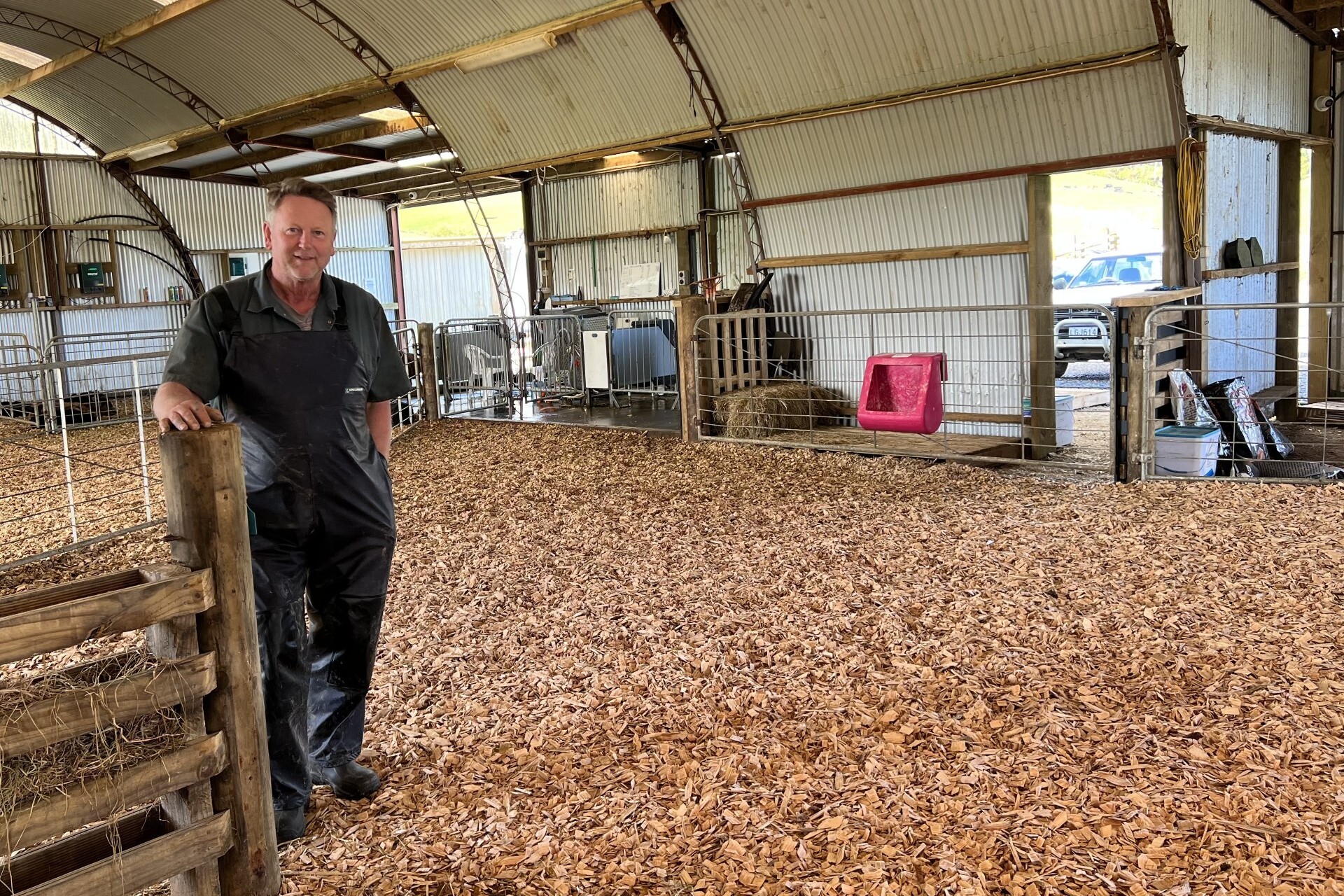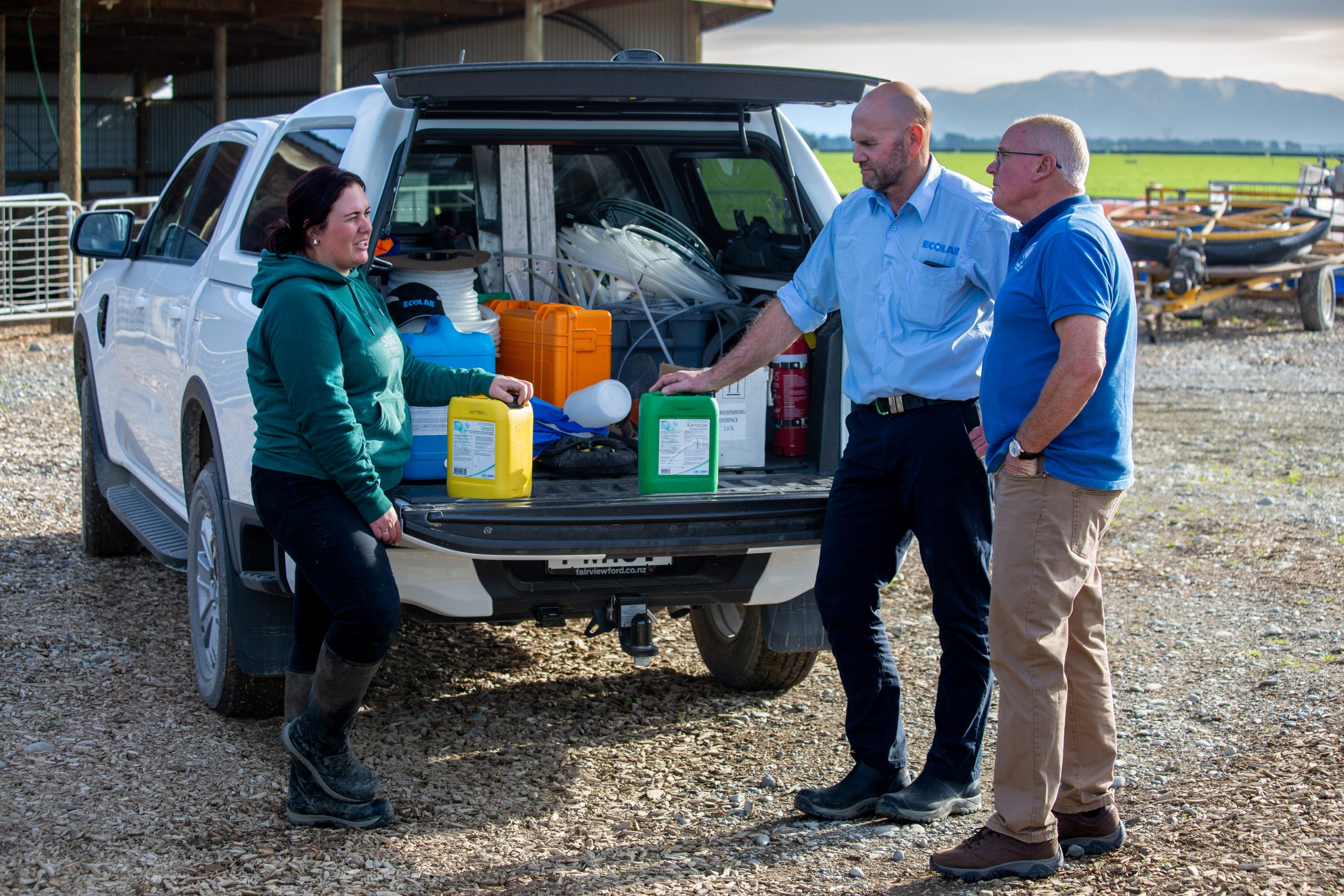Anne Lee
For contract milker Matt Greenwood having the 1200 cows he manages independently body condition scored means he’s dealing with facts.
“Everything we do on farm – and actually our whole farm system here – we want to be based on scientifically proven information not somebody’s theory,” he says.
Matt and Vanessa Greenwood are contract milkers on two of Kieran and Leonie Guiney’s four dairy farms tucked in to the Fairlie basin near the Opuha dam.
Both farms, Hillcrest and Greenburn, peak-milk 600 cows and have no irrigation making the low-input properties highly dependent on the seasonal vagaries of the climate.
All of the farms have a maximum supplementary feed budget of 300kg drymatter (DM)/cow. It’s almost always pasture silage and is fed when needed through January, February and March because that’s when they get the best response.
Farm facts
Contract milkers: Matt and Vanessa Greenwood
Hillcrest: 170ha (owners Kieran and Leonie Guiney)
Greenburn: 232ha (50-50 equity partnership Guineys and Ron Smith)
Cows: 600 crossbred on each farm
Farm dairy: 40-aside herringbone each farm
Supplement: maximum 300kg DM/cow/day each farm
Dryland: no irrigation
It allows them to build covers, pushing pasture out ahead of them to milk off through autumn.
The low-input system means they need accurate information and time if they’re going to make sure all the boxes are ticked when it comes to cow condition and pasture cover targets to ensure they’re set up, ready for their A game next season.
“We used to do our own condition scoring but when there’s heaps of feed around especially in the autumn the rose-tinted glasses can come out and cows can get milked longer than they should,” Matt says.
All of the Guiney farms have cows independently body condition scored (BCS) by certified assessor Brenda Lynch.
“Having that independent assessment means we’re getting very close to a measured number so we’re working with facts not just what we think is happening. It’s important to be as accurate as you can.
“Everything about farming now is more precise and measured and it shouldn’t be any different for this (BCS assessment).”
‘We used to do our own condition scoring but when there’s heaps of feed around especially in the autumn the rose-tinted glasses can come out and cows can get milked longer than they should.’
While Matt and his team have a reasonably good idea of which cows would fall into a BCS range or be at the light or fat end of the scale, he says being consistently accurate with individual cows is more difficult.
“A Jersey can look lighter than a Friesian, a smaller heifer that’s poorly grown – you might think is light but it’s not, it’s just small. A white cow can look lighter than a black one.
“So saying one cow is a (BCS) 4 rather than a 4.5 – that’s a bit more tricky – not impossible but Brenda does it every day.
“She knows our tool for putting on condition here is time, not putting in supplement so she takes that into account when she puts our reports together.
“We don’t age-scan pregnancies so we don’t make allowances for late or early calvers – we just want all cows to be at (BCS) 4.5 on June 1 because we’re confident we can put half a condition score on them over winter, especially on (fodder) beet.”
The February assessment is where it begins for the following season and Brenda’s reports will list which cows have to be dried off when to give them enough days to gain the condition needed.
She can give Matt an action plan that could also include putting cows on once-a-day (OAD) milking – listing which cows or even suggesting the whole herd.
Her report may also include how much feed specific cows will need over the dry-off period to gain the condition required by June 1.
From the operator’s point of view – whether that be a sharemilker, contract milker or manager, having a set plan reduces the potential for tension, particularly through the autumn period.
“We have a plan and they’re the rules. If the report lists out 50 cows that need to be dried off on a certain day in March, then that’s the day we dry those cows off.
“You just wouldn’t get the situation where an owner turns up and says why didn’t you dry these cows off they’re too light or why have you dried cows off now we’re going to miss out on some milk.
“Instead it’s – these are the facts and this is the plan.”
Matt says having the BCS assessments done at four key times of the year for the past three years means they’ve managed to bring the tail end up and tighten the spread of BCS at calving.
The research is pretty clear on the benefits of having cows calve at BCS 5 and heifers and second-calvers at BCS 5.5 so that’s why they do it, he says.
“Again we want to use management practices here that are based on proven science and that one’s pretty well established.”

Matt says while they did see six-week in-calf rates climb initially after they began independently assessing BCS they dropped back again last mating.
“There are a lot of things at play when it comes to getting repro right so while I think it probably is improving mating I can’t definitely say that.”
The BCS assessment done in May to put cows into wintering mobs has also proven its worth.
Heading into this last winter 50 cows on each of the two farms Matt runs were identified as already at or over the BCS target for planned start of calving.
That meant they were able to winter them at home, on maintenance feed, saving tens of thousands of dollars.
“It saved us a lot of money in winter feed but it also probably saved us over calving too because those cows would have been fed at a level to put on half a condition score and they would have ended up at a very high risk of metabolic problems.”
At the end of winter cows are scored out in the paddock with a sample of cows assessed rather than individual BCSs done.
“That gives us an idea of how we did over winter. Have we achieved what we tried to achieve?
“We can review how cows performed on different crops and we can see what we’re dealing with going into calving.
“We watch them carefully through the winter but getting them scored gives us the facts to work with.”
Matt says the Greenburn cows are wintered on a block close to the milking platform on fodder beet while the Hillcrest cows go to a specialist wintering block owned by the Guineys where they are wintered on kale, grass and silage.
The BCS recordings show the fodder beet is unbeatable as a crop to put condition on cows over winter, Matt says.
But by putting cows into wintering groups according the BCS and thanks to the cold winter conditions that frequently include several snow falls they have few over fats but also very few under target at calving.
“Because we have that independent assessment before calving it gives us a heads up so if we did have a few over fats we’d know we’d be dealing with metabolics with them.
“If we have some lighter cows that haven’t made target we don’t want to restrict them just before they’re due to calve the way we do for cows that are at or over target.
“Any cows under target will get maintenance but any that are at (BCS) 5 or more will get 80-90% of that. That’s based on DairyNZ’s advice and the research that’s been done here and overseas,” Matt says.
The next BCS assessment is carried out in mid-late September leading up to mating.
That’s an individual cow, in-bail assessment and the report means Matt can target the right management approach at the right cows.
Supplement is avoided in spring unless there’s a significant seasonal issue so any light cows will be either put on OAD milking or preferentially fed depending on their BCS.
“Preferentially feeding for us means making it easier for those cows. So if we had a small number of light cows we’d put them into the main herd’s break the day before and then take them out before the main herd comes in.
“Or it can mean having a mob we’ve identified as lighter and making sure they go into paddocks that are closer to the shed and that they don’t go into any pre-graze covers that might have got a bit high. They may get the young grass paddock when it’s ready too – they’ll get the pick of what we can offer them.”
With 1200 cows to manage across two farms and with six staff Matt says he’s a big fan of having policies and systems that are clear and well understood.
“And having these policies around body condition score – well that’s part of that.
“Everyone is clear on what the policy is, what we’re trying to achieve and how we’re going to achieve it – everyone from the owner to me as the contract milker and the staff.”
Anne Lee
@Cantabannelee






